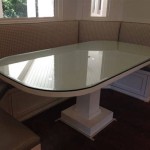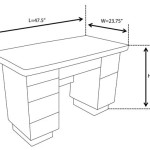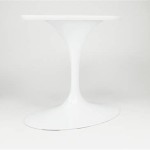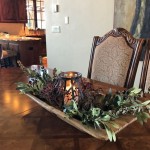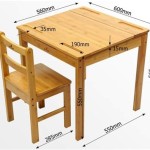```html
Plain White Table Runner: A Versatile Foundation for Dining and Décor
The plain white table runner is a staple in both residential and commercial settings, valued for its adaptability and understated elegance. Its simplicity allows it to seamlessly integrate into a wide range of design schemes, providing a neutral canvas upon which to build a cohesive and visually appealing tablescape. From casual family meals to formal events, the plain white table runner offers a practical and aesthetic solution for protecting table surfaces and enhancing the overall dining experience.
The widespread appeal of the plain white table runner stems from its ability to complement diverse styles. Unlike patterned or colored runners that may clash with existing décor, a plain white runner acts as a unifying element, bringing harmony to the table setting. Its neutrality also makes it an excellent choice for seasonal decorations, allowing for effortless transitions between holiday themes and everyday arrangements.
Versatility in Material and Texture
Plain white table runners are available in a variety of materials, each offering its own set of benefits and characteristics. Cotton, linen, polyester, and blends of these fibers are commonly used, providing a range of options to suit different budgets and aesthetic preferences.
Cotton table runners are known for their softness, absorbency, and affordability. They are a practical choice for everyday use, offering a comfortable and inviting feel. However, cotton is susceptible to wrinkles and may require ironing to maintain a crisp appearance. It also tends to shrink with repeated washing, so pre-shrinking or purchasing a slightly larger size is recommended.
Linen table runners exude a refined and timeless elegance. Linen fibers are strong and durable, and linen becomes softer and more absorbent with each wash. Linen is also naturally resistant to bacteria and mildew, making it a hygienic choice for dining settings. However, linen is more expensive than cotton and wrinkles easily. A slightly wrinkled linen runner can contribute to a relaxed and informal aesthetic, but ironing is typically required for formal occasions.
Polyester table runners are a synthetic alternative that offers excellent stain resistance and durability. They are less prone to wrinkles than cotton or linen and are generally easier to care for. Polyester is also a more affordable option, making it suitable for large events or commercial settings where frequent laundering is required. However, polyester is not as absorbent as natural fibers and may not have the same luxurious feel as linen or cotton.
Blended fabrics, such as cotton-polyester blends, offer a combination of the benefits of both fibers. These blends are typically more affordable than pure cotton or linen, while still providing a degree of softness and absorbency. They are also more resistant to wrinkles and shrinkage than pure cotton.
The texture of a plain white table runner can also significantly impact its overall aesthetic. Smooth, tightly woven fabrics offer a more formal and polished look, while textured fabrics, such as those with a slub or waffle weave, add visual interest and depth. The choice of texture should be guided by the overall style of the dining space and the occasion.
Enhancing Décor and Creating Visual Appeal
A plain white table runner serves as a blank canvas for showcasing tableware, centerpieces, and other decorative elements. Its neutrality allows these items to take center stage, creating a visually appealing and cohesive tablescape. The runner can be used to define the dining area, adding a sense of formality and structure to the table setting.
When choosing a plain white table runner, consider the size of the table and the desired overhang. A runner that is too short will appear visually unbalanced, while a runner that is too long may become cumbersome. A general guideline is to allow for an overhang of approximately 6 to 12 inches on each end of the table. This provides a visually pleasing drape without interfering with seating or table movement.
The runner can be used to layer textures and colors, creating a more dynamic and interesting tablescape. For example, a plain white linen runner can be paired with colorful placemats and napkins to add a pop of color. Alternatively, the runner can be layered with a patterned tablecloth underneath for a more elaborate and layered look. The key is to maintain a balance between the various elements, ensuring that the overall effect is harmonious and not overwhelming.
Centerpieces can be strategically placed on the table runner to create a focal point. Floral arrangements, candles, and decorative objects can all be used to enhance the visual appeal of the table setting. The white runner provides a clean and uncluttered background, allowing the centerpiece to stand out and capture attention.
The plain white table runner is also an excellent choice for buffet tables and dessert displays. It provides a clean and professional look, while also protecting the table surface from spills and stains. The runner can be used to highlight the food and desserts, creating an enticing and visually appealing display.
Practical Considerations and Maintenance
Beyond its aesthetic qualities, the plain white table runner offers practical benefits, including protecting the table surface from scratches, spills, and heat damage. It also helps to absorb noise, creating a more pleasant dining environment.
Proper care and maintenance are essential to preserving the appearance and longevity of a plain white table runner. Following the manufacturer's instructions for washing and ironing is crucial. In general, cotton and linen runners can be machine washed and tumble dried on a low setting. However, it is important to avoid using harsh detergents or bleach, as these can damage the fibers and cause discoloration.
Stain removal should be addressed promptly to prevent permanent staining. Blotting the stain with a clean cloth is the first step. Depending on the type of stain, various stain removal products can be used. However, it is always advisable to test the product on an inconspicuous area of the runner first to ensure that it does not cause any damage or discoloration.
Ironing is often necessary to maintain a crisp and polished look, especially for cotton and linen runners. Use a warm iron and iron the runner while it is still slightly damp. This will help to remove wrinkles and creases more effectively. Store the runner folded or rolled to prevent wrinkles from forming.
For polyester table runners, machine washing and tumble drying are typically sufficient. Polyester is less prone to wrinkles than natural fibers, so ironing may not be necessary. However, it is important to avoid using high heat when drying polyester, as this can cause shrinkage or damage to the fibers.
In commercial settings where frequent laundering is required, durable and stain-resistant materials such as polyester or blended fabrics are recommended. These materials can withstand repeated washing and drying without losing their shape or color. The use of commercial-grade detergents and stain removal products is also advisable for maintaining a clean and professional appearance.
```
100 Beautiful Superior Polyester Table Runner White

Saro Lifestyle Solid Color Everyday Table Runner White 16 X 72 Target

Plain Off White Table Runner 30cm Width 200cm 320cm Length Home Decor For Kitchen Coffee And Dining Tables

Beautiful White Luxury Plain Table Runner 28 Colours

White Plain Table Runner Size 12 X 60 Inches At Rs 200 In Karur Id 20427360891

Cotton Solid White 152cm Length Table Runner Pack Of 1 Airwill

White Dyed Cotton Table Runner At Rs 150 In Erode Id 24041473748

Plain Off White Table Runner 30cm Width 200cm 320cm Length Home Decor For Kitchen Coffee And Dining Tables

Pure Cotton Table Runner M S Collection

White Linen Table Runner Washed Rustic Kitchen



